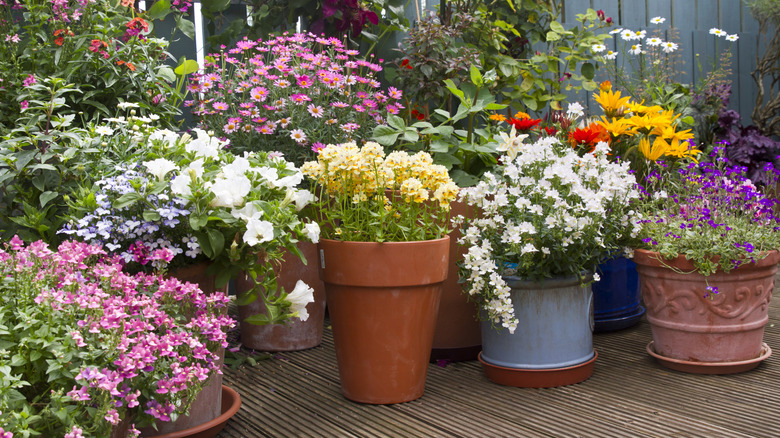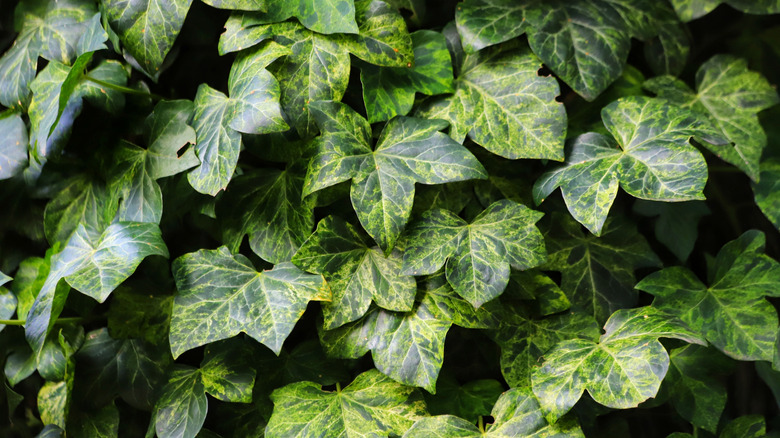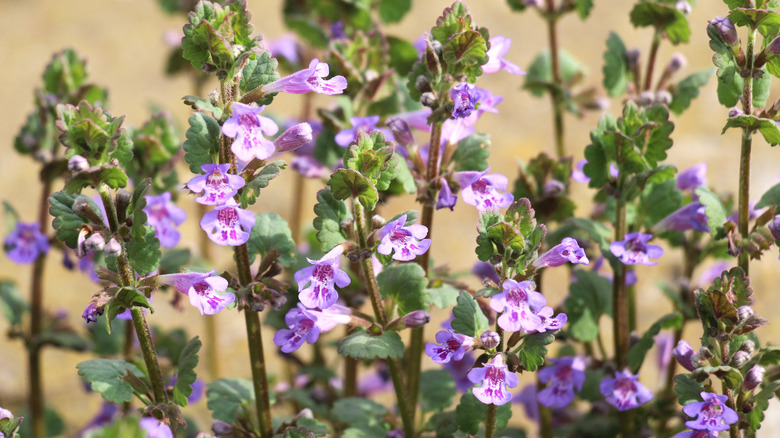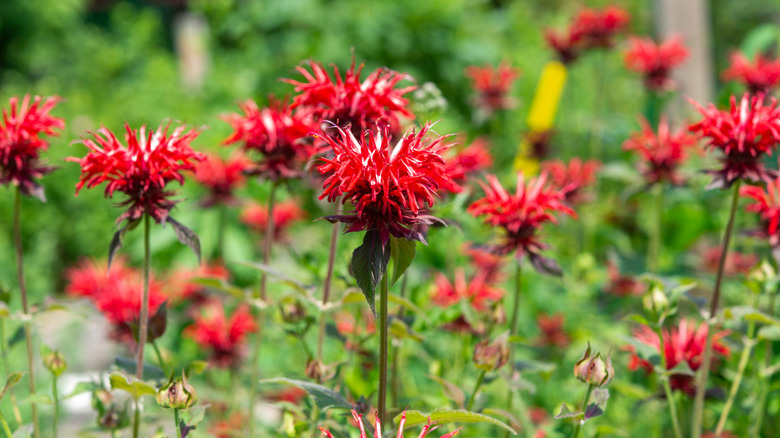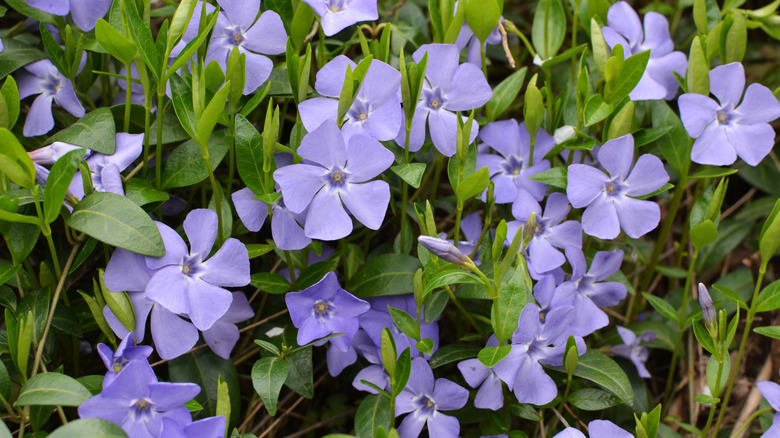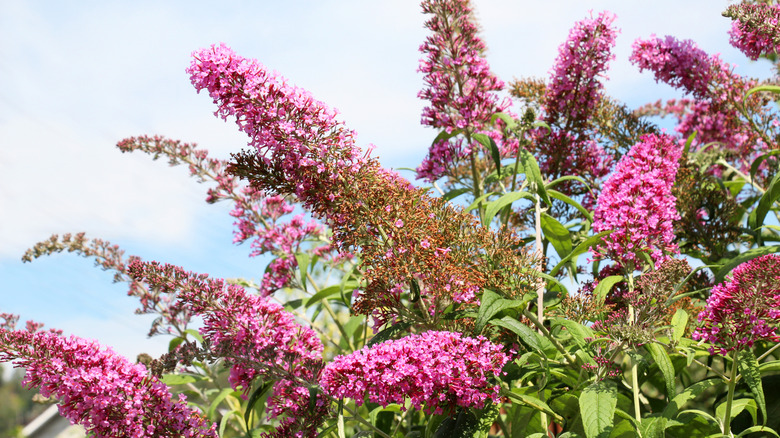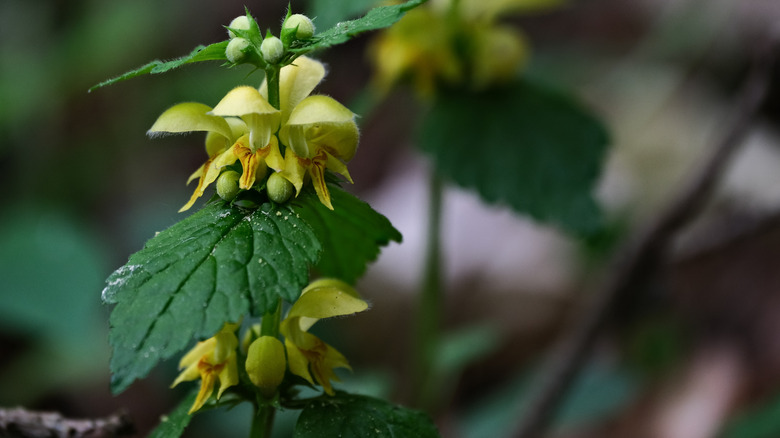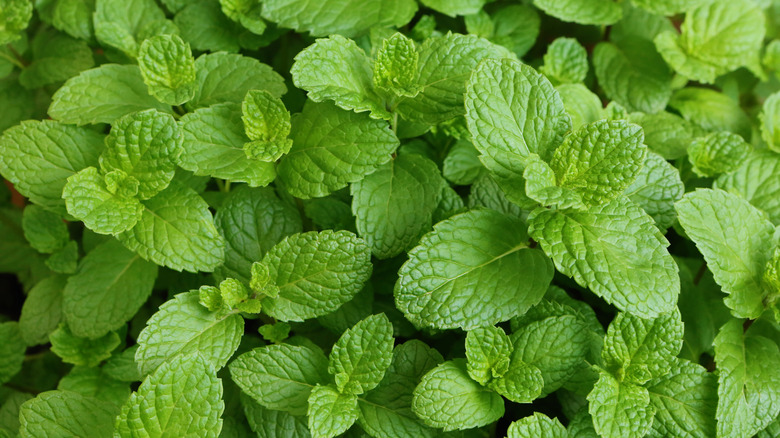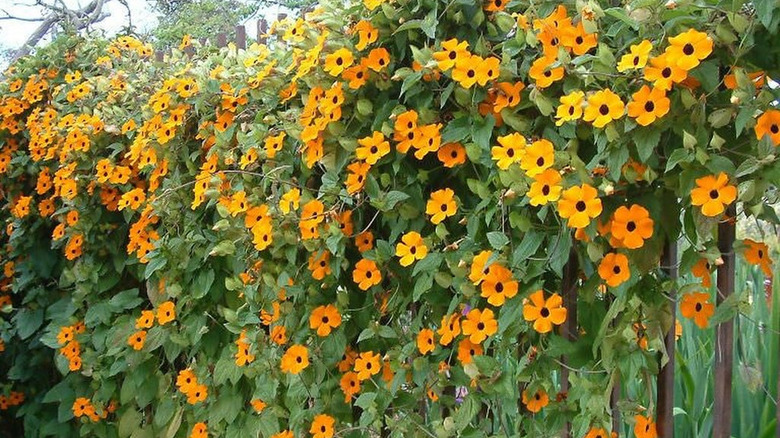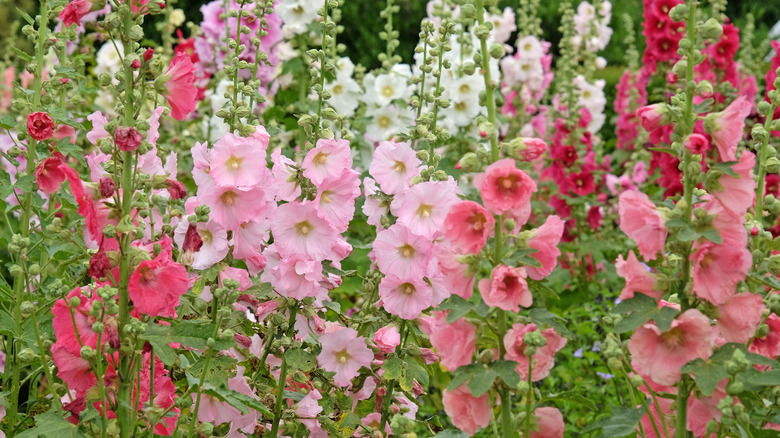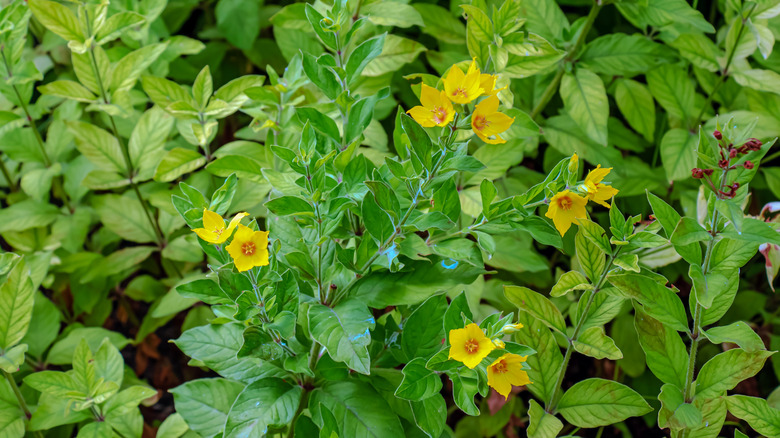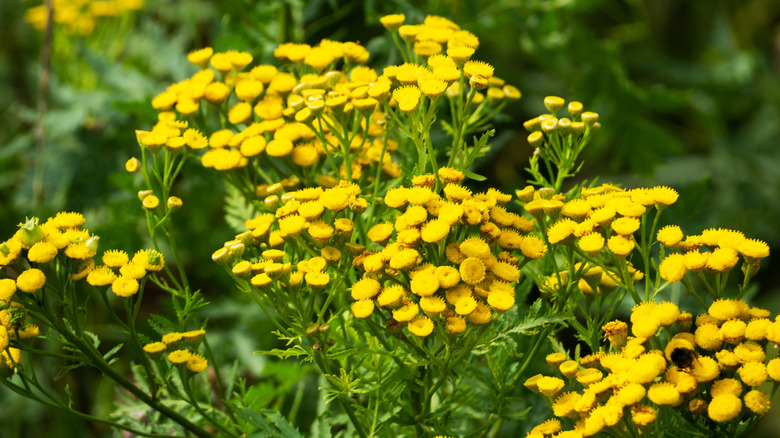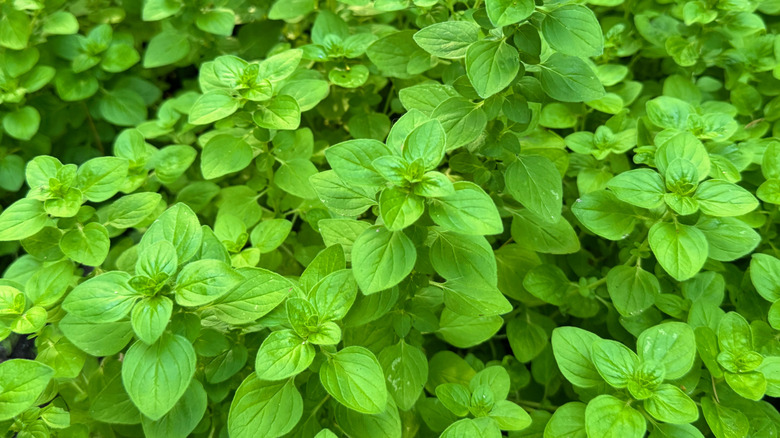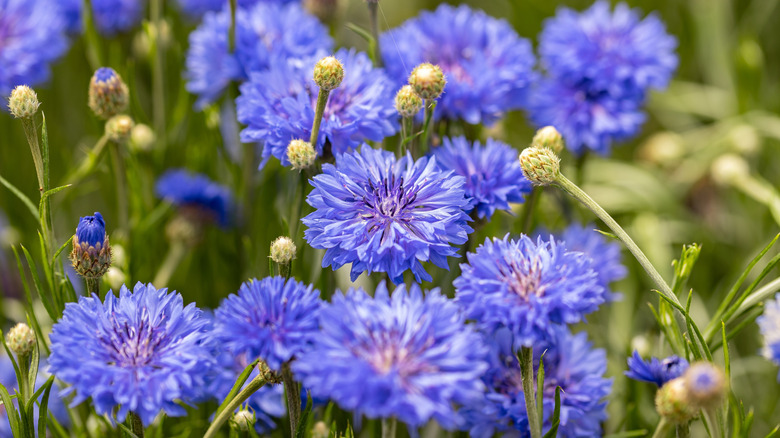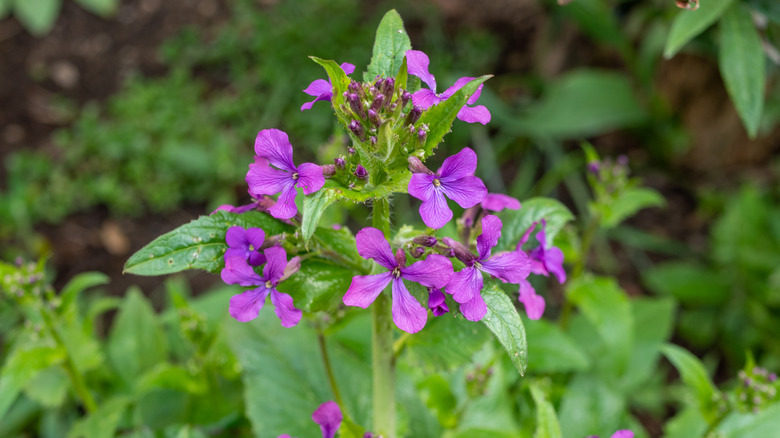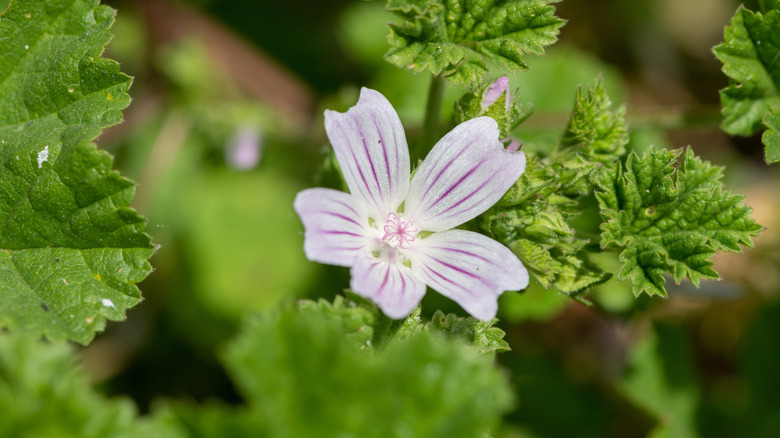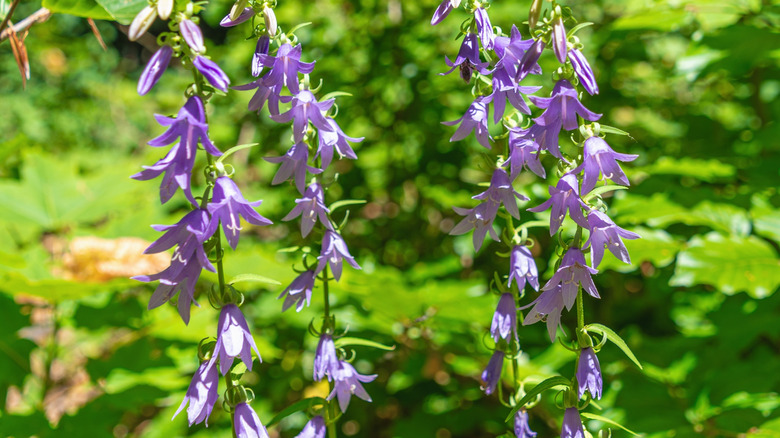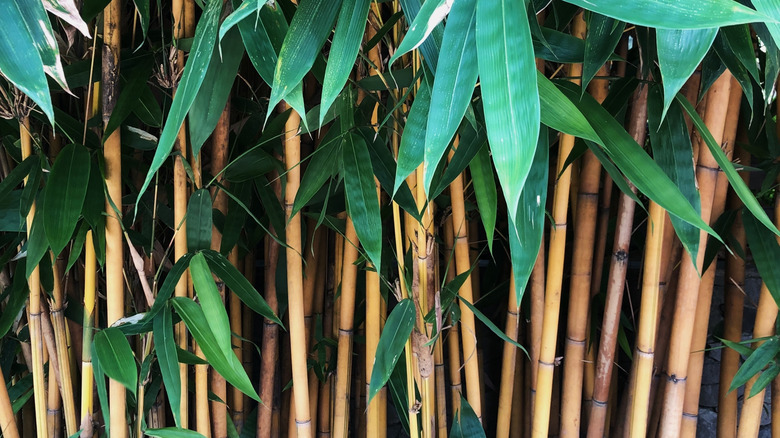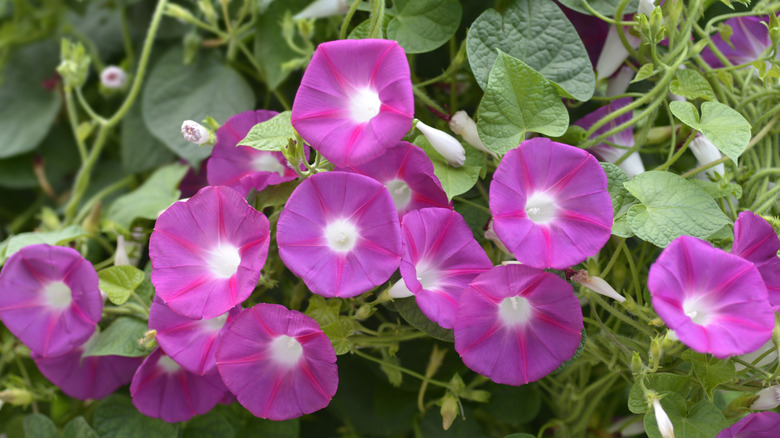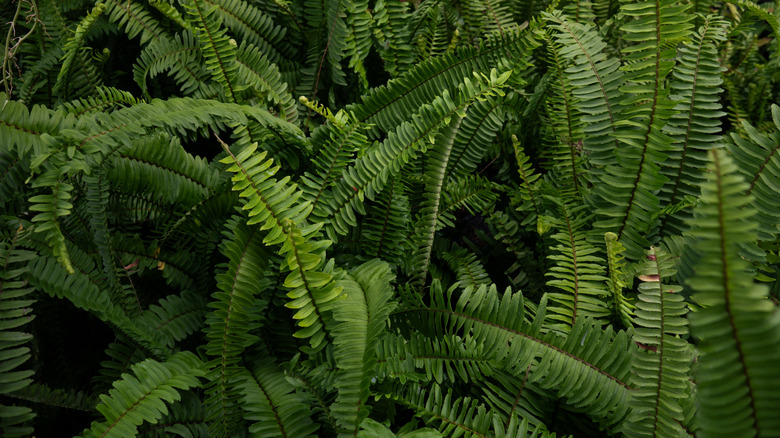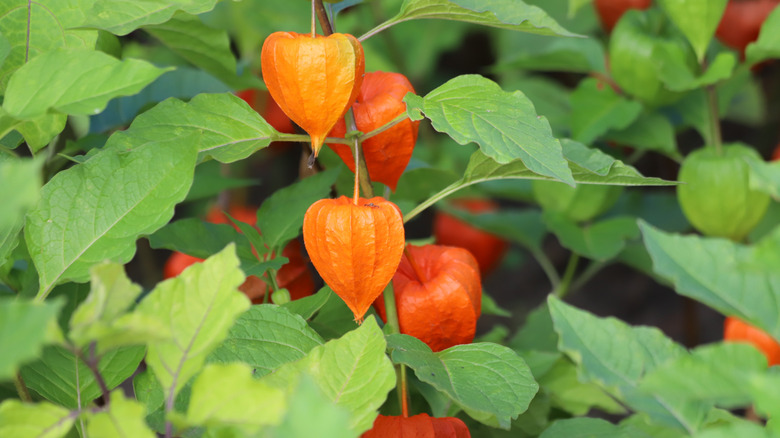20 Common Plants That Should Only Ever Be Grown In Pots Or Containers
When brainstorming the design of your garden, one of the most important things to consider is how plants will grow over time. Several species spread rapidly through self-seeding, stem nodes, or underground rhizomes, allowing them to quickly take up space if they aren't kept in check. In some cases, this can be a good thing, especially if you're looking for a ground cover for part of your yard. On the other hand, if they crowd out other desired species, then these quick growers become a nuisance.
Unfortunately, if invasive plants escape your garden, they can make their way into natural habitats. Once they pop up in new locations, it doesn't take long for them to displace native species that pollinators and other wildlife rely on. Luckily, just because a plant has a tendency to take over doesn't mean you have to keep it out of your yard entirely. Keeping fast-spreading species in containers makes it easy to keep the roots contained in one area. Additionally, you can relocate self-seeding species well before they're able to disperse. By knowing which plants are best-suited for pots, you can not only protect local ecosystems but also save yourself the headache of trying to keep weedy plants under control. Some of the more common plants that you should only grow in containers include spearmint, tansy, creeping Jenny, and common mallow.
English ivy
There's something beautiful about old houses with English ivy (Hedera helix) climbing up the exterior. Despite its charm, you'll likely regret planting this invasive species anywhere outside of a container. It's an extremely fast, aggressive spreader that can quickly take over your garden with its dense growth. Once it spreads throughout your yard, it's nearly impossible to control. Luckily, it looks just as stunning with its vines draped over a hanging basket. You can grow it in USDA hardiness zones 4 through 9 in sun or shade.
Creeping Charlie
Sometimes recommended as a flowering ground cover that thrives in shade, creeping Charlie (Glechoma hederacea) is often more trouble than it's worth. While it may work well to outcompete unwanted weeds, it'll also choke out desired species. Because it spreads rapidly through underground rhizomes, it's hard to contain it in one area. You'll need to continuously hand-pull excess growth, though herbicides are often necessary once it gets out of control. To enjoy its pretty purple flowers, stick it in a container with moist, fertile potting soil instead. It's hardy in zones 3 through 10 and prefers partial sun.
Bee balm
If you're looking for plants for your pollinator garden, bee balm (Monarda spp.) seems like the perfect choice. It's native, has attractive pink, red, or purple blooms, and bees and butterflies can't get enough of its nectar. Although it's not an invasive species, it spreads aggressively with its underground rhizomes, often crowding out other desirable plants. To keep the pollinators and your garden happy, keep it in a pot in a sunny area of the yard. It prefers moist, well-drained potting soils and is easily grown in zones 4 through 9.
Periwinkle
You may have seen these lilac, phlox-like flowers being sold at your local garden center. Although common periwinkle (Vinca minor) may look delicate, it's an aggressively spreading invasive species that can escape cultivation and choke out valuable native wildflowers. Rather than planting it in a bed or border, opt for a container that keeps its underground runners in check. This plant is often grown as an annual, though it's considered a perennial in zones 10 through 11. It prefers a partly shaded spot on a balcony or patio.
Butterfly bush
Butterfly bush (Buddleja davidii) is a gorgeous flowering perennial shrub that will attract both hummingbirds and butterflies to your yard with its dense clusters of tubular blooms. While no doubt beautiful, it has escaped cultivation and is now considered to be an invasive plant in several states. Better alternatives are the Buddleja Lo & Behold hybrids, which are mostly sterile and produce very few seeds. Otherwise, control its spread by keeping butterfly bush in a container and removing the flowers before they can seed. It's hardy in zones 5 through 9 and grows well in full sun.
Yellow archangel
Also known as golden dead-nettle, yellow archangel (Lamiastrum galeobdolon) is a low-growing herbaceous perennial in the mint family. It's another ground cover that thrives in shade, but it can also quickly become problematic. It spreads through its nodes, rhizomes, and by seed, allowing it to escape gardens with ease. As it grows, it forms a dense mat that chokes out nearby vegetation. Because it can be so weedy in optimal conditions, it's best suited as a container plant. It's easy to grow in zones 4 through 9 in part to full shade.
Spearmint
With its fresh scent and flavor, attractive green leaves, and easy growth, it almost seems like spearmint (Mentha spicata) would be the perfect ground cover. However, like many plants in the mint family, it spreads rapidly through its rhizomes and stems that can take root anywhere they touch the soil. You can grow this herb in a container indoors or keep it outdoors in zones 4 through 9. Plant spearmint in an organically rich potting mix and place the pot in an area of your yard with full sun or a sunny windowsill inside.
Black-eyed Susan vine
Black-eyed Susan vine (Thunbergia alata), not to be confused with perennial or annual black-eyed Susans (Rudbeckia hirta), is a fast-growing vine that can grow up to 8 feet within just one season. Although it's grown as an annual outside of zones 10 and 11, it readily self-seeds and often pops up all over the yard the following year. By growing it in a container, you can better limit where the seeds can travel, especially if you remove them as they emerge. For the best blooms, place it in a sunny spot in your yard.
Hollyhock
With their showy cup-shaped flowers that attract a variety of pollinators, it's hard not to love hollyhocks (Alcea rosea). However, this plant produces an abundance of seeds that cause it to pop up all over the garden, and it has a tendency to escape cultivation and is even on an invasive species list in California. Although it isn't as problematic as other non-natives, it's still a good idea to grow this plant in a pot to limit its spread. It's a gorgeous addition to zone 5 through 9 gardens. All it asks for is full sun to part shade.
Creeping Jenny
Creeping Jenny (Lysimachia nummularia) is a perennial native to Europe that was introduced as a low-maintenance, ornamental ground cover. Unfortunately, many of the traits that make this plant easy to grow are also what make it challenging to control once it spreads. It thrives in moist locations, where it spreads via rhizomes and stem nodes. This plant will outcompete other species, including grass, so it's best to enjoy the pretty foliage and yellow flowers in a container. You can grow creeping Jenny in zones 3 through 8, and it thrives in full sun to part shade.
Tansy
It's hard to deny the appeal of the adorable, yellow, button-like flowers that bloom in clusters on common tansy (Tanacetum vulgare). Although it has many positive traits, it has escaped cultivation and is declared invasive in several states. Its dense growth crowds out valuable natives in disturbed areas, so if you want to grow tansy, keep it in a container, and make sure to deadhead flowers before they have a chance to seed. Tansy is hardy in zones 3 through 8 and grows in full sun to part shade.
Oregano
Oregano (Origanum vulgare) is best known as a flavorful herb, but it also looks striking in the garden, especially when in bloom. Unfortunately, this subshrub can spread easily, so unless you want it popping up in other areas of your garden, you may want to keep it contained in a pot. It's a herb that successfully grows indoors over winter, or you can grow it in a sunny area outdoors in zones 3 through 8. As a Mediterranean herb, oregano is drought-tolerant and doesn't like high humidity.
Perennial cornflower
Perennial cornflower (Centaurea montana) goes by many names, including perennial bachelor's button and mountain bluet, and it features showy, dome-shaped blue blooms. It's a striking flower, but it can be a nightmare to have in the garden. It can spread somewhat quickly via stolon, causing it to form colonies around the yard. If you want to add pops of blue to your floral display, keep cornflower in a container in a spot with plenty of sun. It's an easy-to-grow plant that's tolerant of drought, but needs good drainage.
Silver dollar
Despite its name, silver dollar (Lunaria annua) is a flowering biennial with rich, purple blooms. While these may make beautiful flowers for a cut flower garden, all it takes is one plant to scatter its seeds and ensure its presence year after year. It may seem like a good thing, but this species is extremely weedy. In addition to keeping it potted, make sure to collect the seed stalks before they can disperse in the fall. Grow silver dollar in zones 5 through 9 in a pot with good drainage. It thrives when given dappled sunlight.
Common mallow
Also nicknamed cheeseweed or cheese plant due to its flattened seed pods that resemble a wheel of cheese, common mallow (Malva neglecta) is a flowering vine in the Mallow family. It only spreads through seeds, though they can live for long periods of time in the soil. The main issue with this plant is that if the seeds germinate, the plant forms woody taproots that are challenging to remove. If growing this vine, keep it in a container with quality potting mix. It's hardy in zones 4 through 8 and grows best in full sun.
Creeping bellflower
While the pretty, purple, tubular flowers growing along the stems may draw you in, you should grow creeping bellflower (Campanula rapunculoides) with caution. It spreads through both seeds and rhizomes, allowing it to easily escape gardens and find its way into other native habitats, especially in the northern United States. Not only should it never be planted directly in the ground, but it's crucial to remove any fruits before they have a chance to disperse seeds. This plant grows in zones 3 through 9 and thrives in full sun to part shade.
Golden bamboo
Bamboo is one of the most popular plants for a living fence, but running bamboo species, like golden bamboo (Phyllostachys aurea), are best kept in pots. It spreads rapidly through underground rhizomes, eventually forming large stands that displace native plants. This species is considered invasive across several states, including Georgia, Virginia, and Pennsylvania. For the healthiest growth, large containers work best. Some even recommend using feed troughs if you have the space. It's hardy in zones 4 through 10 and prefers full sun to part shade.
Morning glory
Morning glory (Ipomoea purpurea) is a flower that gardeners either love or hate. This vine has distinctive tubular blooms that beautifully add color to the garden, though many avoid it at all costs because of its weedy nature. Although an annual across zones 2 through 11, it readily self-seeds, allowing it to pop up year after year. To manage this, keep it in a pot and be mindful of where you place it. That said, you'll need to choose a location that receives plenty of sunlight to get the most blooms.
Invasive sword fern
Invasive sword fern (Nephrolepis cordifolia) bears a striking resemblance to native sword ferns and requires more careful planting than those naturally growing in the United States. It spreads aggressively and outcompetes native species, resulting in it now being considered invasive in Florida. It forms dense stands that make it impossible for other low-growing plants to thrive nearby. Luckily, the dense foliage looks striking in containers, and you won't have to worry about its spread. This species is hardy in zones 8 through 10 and prefers shade, though it can withstand full sun.
Chinese lantern
Chinese lantern (Physalis alkekengi) plants look interesting through multiple seasons, starting with yellow flowers in the summer. The brilliant orange calyces that follow are especially attractive, and the lantern-like shape is what gives this plant its common name. Unfortunately, its underground stems allow it to spread rapidly, making it a nuisance if left to grow freely. So, it's best kept in a pot where its spread can be easily managed. You can grow Chinese lantern in a spot with full sun to part shade. It's hardy in zones 3 through 9.
